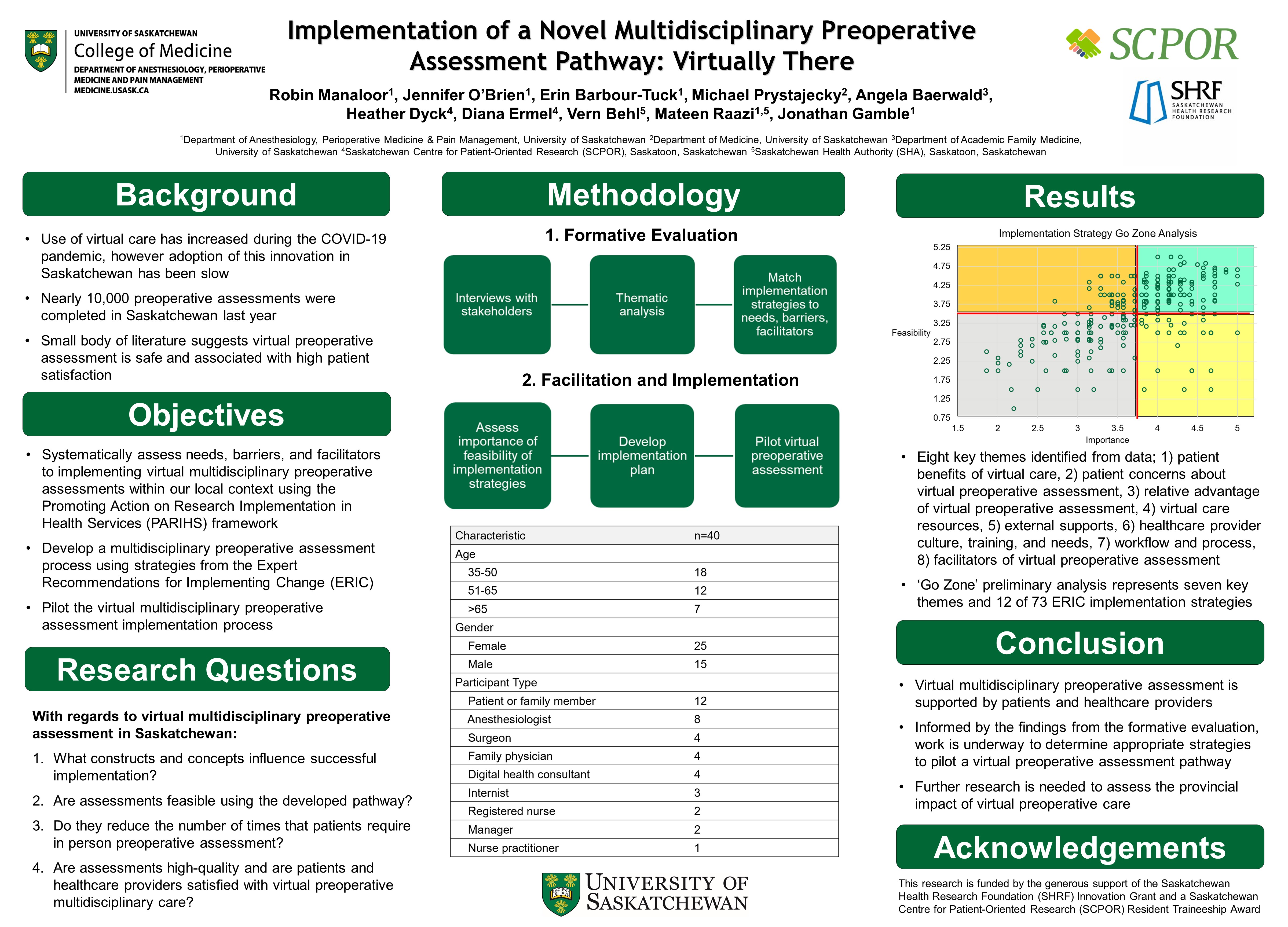
A2.2: Implementation of a Novel Multidisciplinary Preoperative Assessment Pathway: Virtually There
Robin Manaloor, Jennifer O'Brien, Erin Barbour-Tuck, Michael Prystajecky, Angela Baerwald, Heather Dyck, Diana Ermel, Vern Behl, Mateen Raazi, Jonathan Gamble
Introduction: Virtual care use has increased during the COVID-19 pandemic, and patients often prefer virtual care over in-person examinations, yet this innovation remains underutilized for preoperative assessment. The goal of this study is to develop and pilot an evidence-based virtual preoperative assessment pathway for Saskatchewan patients, informed by stakeholders, that addresses needs, barriers, and facilitators relevant to our local context.
Methods: This study employed an effectiveness-implementation hybrid design guided by the Promoting Action on Research Implementation in Health Services (PARIHS) Framework and Expert Recommendations for Implementing Change (ERIC). Purposive sampling was used to recruit key-informants from three broad groups: 1) patients and caregivers, 2) healthcare providers, and 3) decision-makers. We conducted semi-structured interviews with participants using web conferencing software. Interviews were transcribed, coded, and analyzed using deductive thematic analysis. Subthemes of needs, barriers, and facilitators of virtual preoperative assessment were matched to relevant ERIC strategies by members of the research team. Implementation strategies were selected using go zone analysis.
Results: 40 participants were interviewed, including 12 patients and family members, 18 healthcare providers, and 10 decision-makers. 8 key themes and 49 subthemes were identified from the interview transcripts. The key themes were 1) patient benefits of virtual care, 2) patient concerns about virtual preoperative assessment, 3) relative advantage of virtual preoperative assessment, 4) virtual care resources, 5) external supports, 6) healthcare provider culture, training, and needs, 7) workflow and process, and 8) facilitators of virtual preoperative assessment. We identified 293 pairings of subthemes and ERIC strategies, which were narrowed down to 122 pairings using go-zone analysis.
Conclusion: We identified key elements requiring attention for successful implementation of virtual preoperative assessment. Current work with stakeholders is underway to finalize the implementation strategies that we will target in our pilot for virtual preoperative assessment in the Saskatoon Health District.
